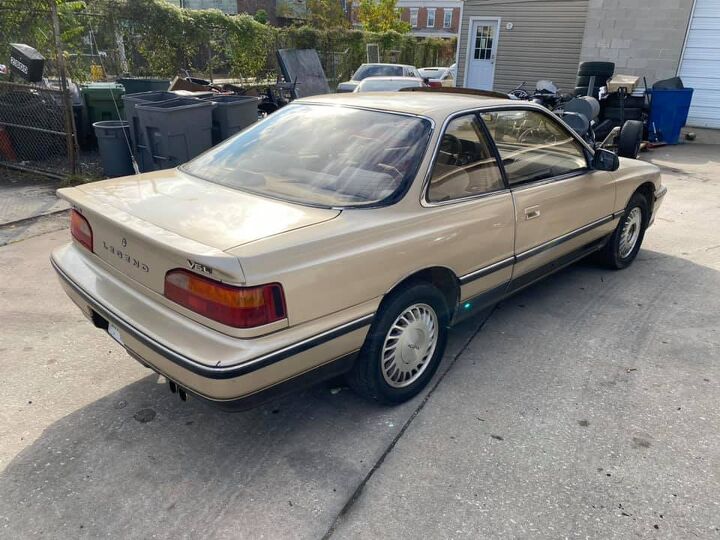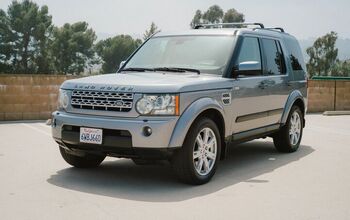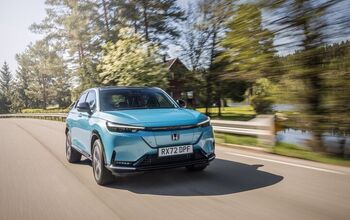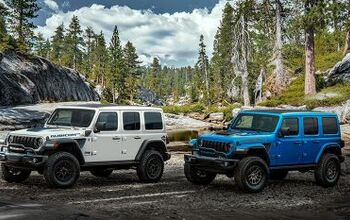Rare Rides: A 1989 Acura Legend Coupe, Luxury With Five Speeds

The Rare Rides series has touched on Acura only once before, in the only Rare Rides Review (to date) of a Honda-owned 2003 Acura CL Type-S.
Today marks the second edition of Acura Time, and we step back to the company’s first-ever midsize coupe. Let’s check out a tidy tan-over-tan Legend from 1989.
Acura had a four-year jump on the Lexus brand which would eventually bury it in sales when it entered the North American market for the 1986 model year. At introduction, there were two models of Acura on offer, which were supplemented in short order to total four body styles. The entry-level models were the coupe and sedan Integras, flanked by the upper-middle class Legend coupe and sedan. Ah, simple lineups! What a time to be alive.
In addition to a first attempt at midsize luxury, the Legend was also the first Honda in production to have a V6 engine. Previously Honda shied away from excesses like power steering, air conditioning, and engines with more than four cylinders. But that skinflint essence of car attitude would not fly in an American offering above the Accord class. Worth a mention, the Legend project was a joint development with Rover, which netted Honda a reliable luxury sedan and Rover a much less reliable luxury sedan with wood and bad electrics. But we’ve covered the 825 before.
The Legend coupe joined its sedan sibling a year after the brand’s debut, in 1987. To compensate would-be buyers for the wait, the first-year coupe featured a larger 2.7-liter V6 engine (161hp) which was exclusive to the two-door for exactly one year. In 1988, sedan Legends also received the larger 2.7. Legend entered the North American market with a 2.5-liter engine that produced 151 horsepower. Two transmissions were on offer in the first generation Legend: a four-speed automatic, and five-speed manual.
The Legend’s first update occurred for 1989, with a visual refresh for the sedan which was not carried over to the coupe. Nonvisual updates were bestowed upon both versions of the Legend and included standard ABS and a memory seat function for the driver. The LS trim in ’89 also featured a standard driver’s airbag, a trip computer, Bose audio, and vehicle monitoring in the dash. Additional visual revisions were made for the first generation Legend’s final model year in 1990, and mostly consisted of tail lamps, some new seats, and body-colored trim. Those changes made it to the sedan and coupe.
The second-generation Legend was ready for 1991, and arrived with a larger engine, more modern styling, and a higher price tag (especially for the coupe). With the second generation Legend two-door, Acura intended to go head-to-head with the Lexus SC 300.
Today’s Legend is a base L trim, with a manual transmission and cloth seats. The seller claims it has no dents but those with functioning eyes will disagree. But hey, “I know what I got,” says he. Yours for $4,000.
[Images: seller]

Interested in lots of cars and their various historical contexts. Started writing articles for TTAC in late 2016, when my first posts were QOTDs. From there I started a few new series like Rare Rides, Buy/Drive/Burn, Abandoned History, and most recently Rare Rides Icons. Operating from a home base in Cincinnati, Ohio, a relative auto journalist dead zone. Many of my articles are prompted by something I'll see on social media that sparks my interest and causes me to research. Finding articles and information from the early days of the internet and beyond that covers the little details lost to time: trim packages, color and wheel choices, interior fabrics. Beyond those, I'm fascinated by automotive industry experiments, both failures and successes. Lately I've taken an interest in AI, and generating "what if" type images for car models long dead. Reincarnating a modern Toyota Paseo, Lincoln Mark IX, or Isuzu Trooper through a text prompt is fun. Fun to post them on Twitter too, and watch people overreact. To that end, the social media I use most is Twitter, @CoreyLewis86. I also contribute pieces for Forbes Wheels and Forbes Home.
More by Corey Lewis
Latest Car Reviews
Read moreLatest Product Reviews
Read moreRecent Comments
- Bd2 Ultimately, it comes down to price/whether it makes financial sense for buyers (right now, BEVs just aren't there, even with the tax credit). HEVs are finally seeing their place in the sun, decades after being a niche market; this is due to premium for HEVs having narrowed significantly with pure ICE, whereby buyers can recoup that after 2-3 years of ownership.
- MaintenanceCosts I've experienced three cars that were the first year of the model. The two I bought (first-off-the-boat 2004 TSX and midyear 2006 Civic) were both Hondas and were both flawless. The other one was my ex-stepmother's 1990 Land Rover Discovery. It was one of the very first Euro-spec models, a two-door with an asthmatic carbureted 3.5L V8 and a five-speed manual. Every part of the car broke at some point, including things like hatch hinges that really shouldn't break. It turned her off Land Rover forever, and her cars since have all been Subarus.
- MaintenanceCosts When I was living with my Bolt in a rental condo and charging from 120V in the garage, as soon as the association figured out what was happening, they asked me to pay $30 a month to cover the cost. That's pretty close to what I was using so I had no issue with it.
- SCE to AUX I've had mixed results with first-year cars:71 Pinto - good. 85 LeBron GTS - good. 96 Grand Voyager - good. 02 Passat B5.5 - bad. 05 Odyssey - bad. I also had a last-year car that was terrible (80 Bobcat), but most cars were crap then, anyway.
- Crown Go big or go home. Never understood the "economy version" that manufacturers make of a performance car.






































Comments
Join the conversation
The Legend was nice but it seemed like a halfway effort if Honda's intent was to crack the premium market. With its midsize profile, front-wheel drive and nothing on offer larger than a V-6, it would never challenge the players in the ritzy end of the market. Honda needed to go all in with a full-size rear-driver with a V-8 (or more) if it was going to be taken seriously. While I was a longtime Honda fan and very open to the idea of stepping up to a premium product by Honda, I wasn't interested in buying what seemed like an Accord at a higher trim level. Today I'm not even sure what Honda considers Acura to be in relation to the market at large, and I don't give it a second thought when deciding on my next ride.
My best friend in high school had one of these. It was 1997-98 and the car had I want to say around 120,000 miles at the time but felt, looked, and according to him, drove like new.